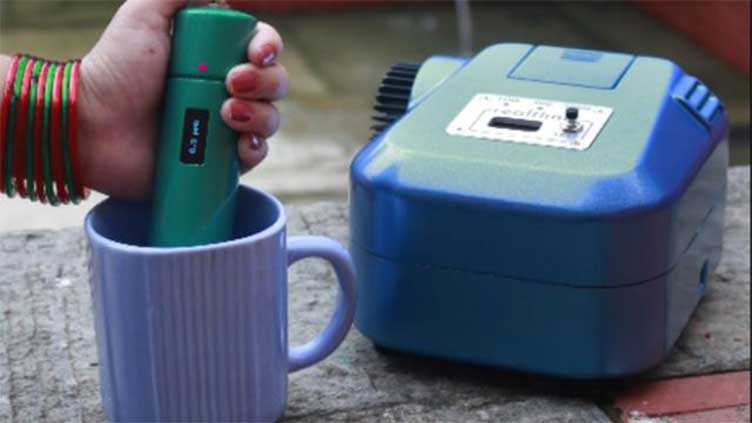First ever lensless device developed to detect water contaminants

Technology
New detection system to save millions of lives
(Web Desk) - A more efficient, low-cost system to help detect microbes in water quickly and easily could help save millions of lives yearly in developing countries.
A new device that detects water contaminants quickly, more efficiently, and cost-effectively can save millions of lives each year in developing countries.
Recently, scientists from the Phutung Research Institute in Nepal, the University of São Paulo in Brazil, and the University of York in the UK collaborated to devise a fluorescence detection system.
Unlike conventional instruments that have lenses, this system doesn’t use lenses for microbial detection in drinking water.
Not only, can this fluorescence detection system help detect unsafe water sources but also it can be used to regulate water safety for sporting activities like swimming. This was a concern at the Paris Olympics too.
Dr. Ashim Dhakal, research team leader from the Phutung Research Institute in Nepal told Interesting Engineering that the instrument uses an excitation light source to excite the target molecules from the bacteria in the water sample.
Explaining the process he says that the molecules absorb the energy from the light, lose some of it as heat, and emit the rest of the energy via lower-energy light.
The absorption and emission are dependent on the electronic configuration of the target molecules.
“The amount of the emitted light is measured using a detector to quantify the target molecules, which allows us to infer the presence of the bacteria in the sample.
”Referring to the physical form, Dhakal told IE that an LED is used as the excitation source and a photodiode as the detector with their driver-electronics.Typically, lenses are used in these systems to maximize the amount of excitation light reaching the target molecules and to collect the emitted light from the molecules,” he added.
The challenge faced with microbial detection systems is the usage of lenses because they have to be a specific kind – the limited availability of Numerical Aperture (NA) lenses and integrating them into the design is also a complex process.
The scientist says the new approach completely removes the lenses in the instrument – while significantly enhancing the performance.
The new microbial detection system in water is designed as a lensless fluorescence system with large (1-2 mm2) LEDs and detectors.
According to a statement by the scientists these LEDs recently became available in UV wavelengths. They work by using UV light to excite proteins from harmful microbes and then detecting the resulting fluorescence.
Dhakal says the system targets proteins derived from the amino acid called Tryptophan.
“Tryptophan is the most fluorescent among amino acids called essential amino acids that humans and most of the animals that harbour coliform E. coli in their gut can not synthesize themselves.”
He added that Tryptophan and its derivatives are actively produced and metabolized by E. coli, and are found both within and outside the cells of these bacteria.


